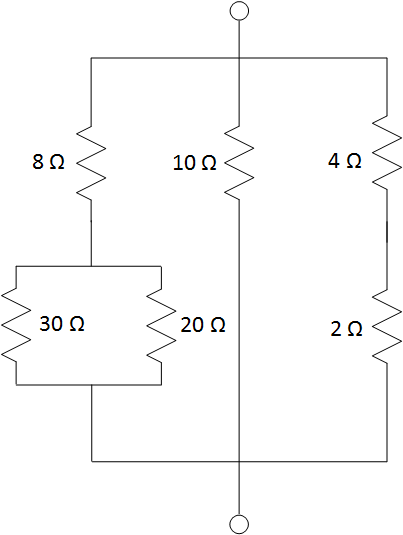What are resistor combinations socratic calculating total resistance of a combination circuit physics forums tutorial circuits 4 ways to calculate in wikihow lesson explainer analyzing nagwa solved example finding cur voltage khan academy question parallel how do you the series plus topper equivalent transcript study com q4 find req for chegg is electronics textbook lab 5 resistances 1 obtain troubleshooting motors and controls basic laws electric resistors components s faqs chapter 18 direct dc symbols battery long line positive side flow conventional open switch closed ppt assignment no 8 consider worksheet tthe figure includes with finite internal r 0 30 e omega flowing through 7 b which has four two known values r4 2 r3 12 r1 part r2 q points assuming ohms each analysis techniques using seen by source fig overall dissipated power holooly instrumentationtools electrical electronic determination procedure it electrical4u section pdf 04 followi itprospt drop across 3 i science electricity worksheets 10th grade

What Are Resistor Combinations Socratic
Calculating Total Resistance Of A Combination Circuit Physics Forums

What Are Resistor Combinations Socratic

Physics Tutorial Combination Circuits

4 Ways To Calculate Total Resistance In Circuits Wikihow
Lesson Explainer Analyzing Combination Circuits Nagwa

Solved Example Finding Cur Voltage In A Circuit Khan Academy

Physics Tutorial Combination Circuits
Lesson Explainer Analyzing Combination Circuits Nagwa

Physics Tutorial Combination Circuits

Question Analyzing Parallel Circuits Nagwa
Combination Circuits

How Do You Calculate The Total Resistance Of A Series Circuit Plus Topper

Finding The Equivalent Resistance Series Parallel Combination Circuits Lesson Transcript Study Com

Physics Tutorial Combination Circuits

Solved Q4 Find The Equivalent Resistance Req For Chegg Com

Equivalent Resistance

What Is A Series Parallel Circuit Combination Circuits Electronics Textbook

Lab 5 Combination Circuits Resistances 1 Obtain The Chegg Com

Combination Series Parallel Circuits Troubleshooting Motors And Controls
What are resistor combinations socratic calculating total resistance of a combination circuit physics forums tutorial circuits 4 ways to calculate in wikihow lesson explainer analyzing nagwa solved example finding cur voltage khan academy question parallel how do you the series plus topper equivalent transcript study com q4 find req for chegg is electronics textbook lab 5 resistances 1 obtain troubleshooting motors and controls basic laws electric resistors components s faqs chapter 18 direct dc symbols battery long line positive side flow conventional open switch closed ppt assignment no 8 consider worksheet tthe figure includes with finite internal r 0 30 e omega flowing through 7 b which has four two known values r4 2 r3 12 r1 part r2 q points assuming ohms each analysis techniques using seen by source fig overall dissipated power holooly instrumentationtools electrical electronic determination procedure it electrical4u section pdf 04 followi itprospt drop across 3 i science electricity worksheets 10th grade